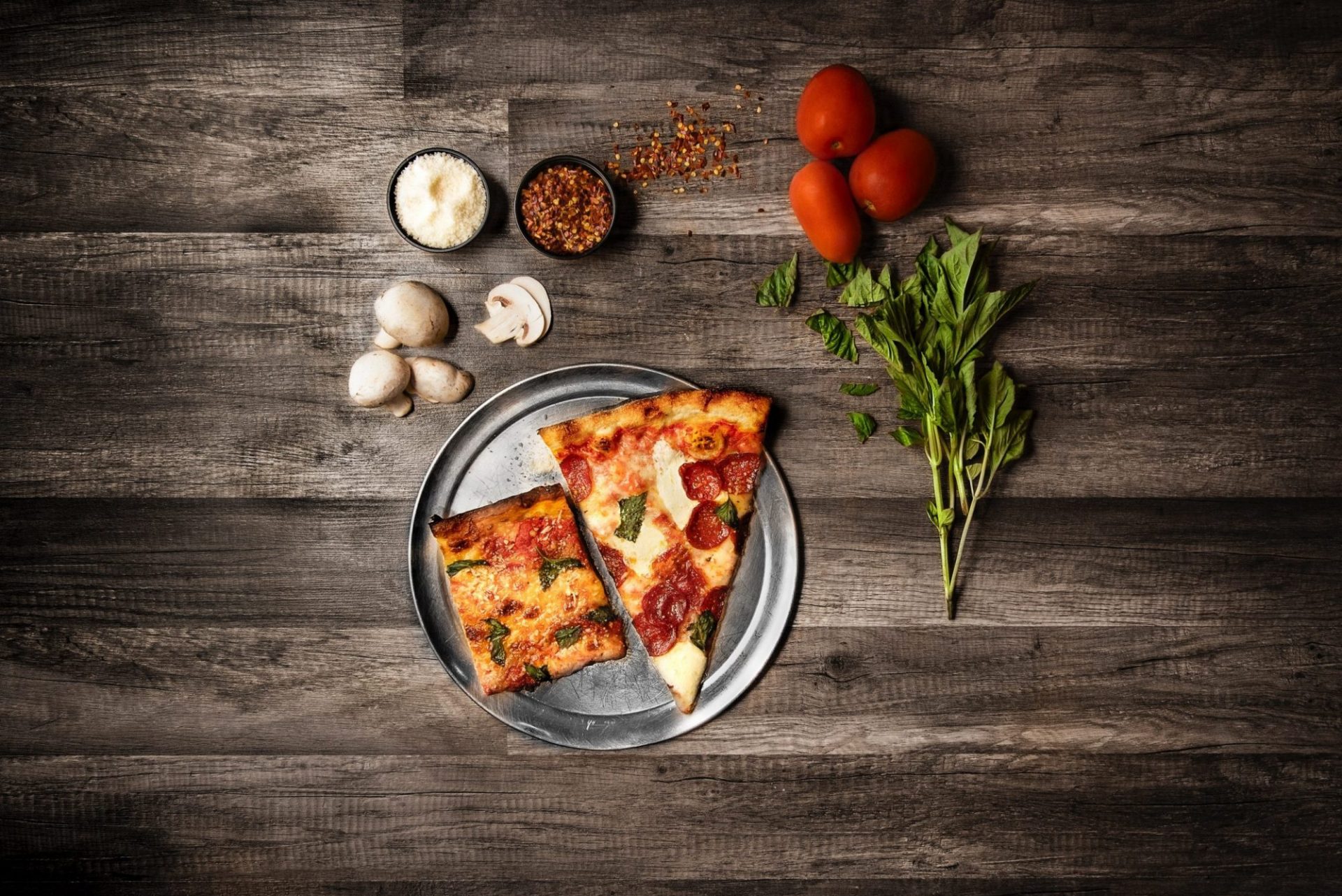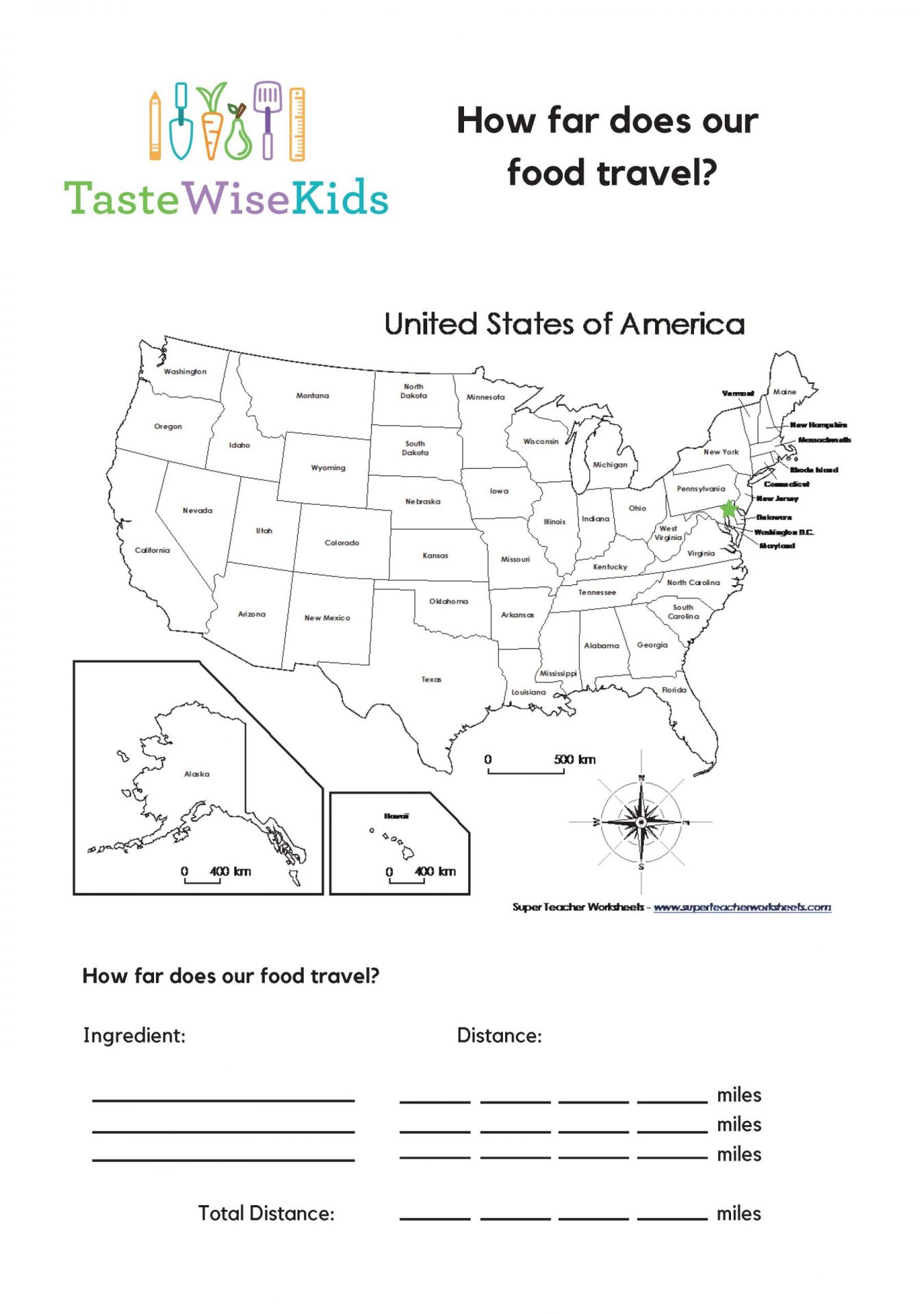#TWKatHome Activities
How far does your pizza travel?
This week’s theme: How food gets from farm to table
To get started, let’s put on our food explorers’ hats. Think about the food you buy from the store to cook for dinner. How did it get there? Have you thought about how far some of your food might travel before it ends up on your plate?

Activity: How far does your pizza travel?
We are going to do a simple activity that uses a pizza to help us think about where our food comes from and how far our food travels before we get to eat it. This is a key activity during Day #1 of our Days of Taste program and is always an eye-opener for the kids (plus, it adds in a bit of math skills in a real-life way).
Instructions are below or use this printable version: How Pizza Travels Activity
Materials for Activity
Get the printable version of the How far does our food travel worksheet here: How far does our food travel? OR use the picture of the map of the United States on this page and grab a blank sheet of paper.
- Piece of paper
- Pencil
- Crayons, makers or something else to color with
Printable Versions
Instructions
The instructions for this activity are broken down into five steps with direction for kids and for parents.
Step 1
For Kids
On a piece of paper, draw a pizza with your favorite toppings. Color in the picture as you want.
For Parents
Ask:
- How long it normally takes to get a pizza delivered or to pick it up after the family decides pizza is for dinner? Write answers in minutes below their picture.
- Estimate number of miles they think the pizza travels from where it was made to their door, and the amount of time. Write answer in miles and hours (or fraction of hours) below their picture.
Step 2
For Kids
Using your picture as a guide, deconstruct the pizza to identify the key parts. You can create a chart of these ingredients on the same paper or a separate piece of paper, using the chart beneath the map of the United States on your How far does our food travel? worksheet as a guide.
For Parents
Ask your child the key ingredients in each component of the pizza. He/she can write the answers down in the columns. Here are a few questions to help your child get to the key ingredient:
- Crust: What is crust made of? What is dough made from? What is flour made from? (answer = wheat)
- Sauce: What is pizza sauce made of? Where do we get tomatoes? When fresh tomatoes are not available, the sauce would probably be made of canned tomatoes.
- Cheese: does cheese grow on a farm? what is the main ingredient? (answer = milk which is found on diary farms)
Key point: all of these core ingredients grow on farms.
Step 3
For Kids
Let’s figure out where each of these ingredients can grow.
For Parents
While there are multiple answers to where each ingredient can grow (and all can grow in Maryland), most times pizza ingredients are coming from all over the United States. Here is some helpful information and approximate distances for reference. You are welcome to also do your own research and/or to focus on a “local” pizza.
- Wheat: We don’t have many wheat farms here in Maryland. Our wheat for pizza most often comes from KANSAS. Find Kansas on the map. How many miles is a farm in Kansas from Maryland? (Answer: About 1300 MILES). About how long is the drive from Kansas to Maryland? (Answer: About 22 HOURS, nearly one day with no sleeping, if you don’t stop to eat or get out of the truck!)
- Tomatoes: If we make fresh tomato sauce, where would we get ripe tomatoes this time of year? Someplace warmer, south of Maryland, maybe FLORIDA. How far is Florida from Maryland? (Answer: About 900 miles). How long does it take to drive 900 miles? (Answer: About 15 hours on the highway, without stopping)
- Cheese: While there is cheese grown in Maryland, the state of WISCONSIN has more dairy farms than any other state. Wisconsin is about 850 miles from Maryland. How long does it take to drive 850 miles? (Answer: The drive would be about 14 hours)
- Toppings: Frequent answers, Pepperoni or sausage (from pigs), Chicken, Mushrooms (grow in Maryland, but one of the “mushroom capitals” of the US is about 100 miles, 2 hours, north in Pennsylvania), Pineapple (grown on pineapple plantations in Hawaii, thousands of miles from Maryland and have to use boat or plane).
Key point is that different food grows in different parts of the country and not all on the same farms.
Extension – part of the rationale for why things grow in different places is based on climate, amount of farmland, etc. Help your children determine how far each of these ingredients traveled to get to your table. This can be added to their worksheet.
Step 4
For Kids
Now add up the miles and the time for your pizza and record it in your chart. Compare this number to how long it takes to get a pizza delivered/picked up.
For Parents
One number is much larger than the other. Talk about why that might be.
Step 5 (Optional)
Share a picture of your finished pizza on Facebook (@TasteWiseKids) or Instagram (@tastewise_kids), tag us and use the hashtag #TWKatHome. You never know, we might feature your work in our next blog post or on our Instagram or Facebook!
Key Activity Points
- Most food starts/grows on a farm even if we don’t see it start there (i.e. we just see it at a grocery store).
- Food can travel long distances to get to us. While we have a lot of great farms in Maryland, much of food still travels from far away.
- The amount of miles these ingredients travel is much bigger than the number of miles from the restaurant or grocery store (because a restaurant or grocery store is the last stop for food before it comes to our home)
Keep Learning
Let’s explore how your food gets from the farm to grocery shelves and eventually to your house – here are a few fun resources to check out!
- Listen to or watch the song “Oats, Peas, Beans and Barley Grow” (Here are lyrics if you’d like to follow along).
- Talk about the different foods and how they grow in the ground and then are picked so people can eat them.
- If you can, show a picture of each and talk about what is the same and different (identify the colors; are some bigger or smaller than others, etc.).
- Older kids could try to write a different version with different foods or answer these more in-depth questions listed in this larger lesson plan.
- Read the book How did that Get in My Lunchbox? by Chris Butterworth – a favorite book in my household. You can use this free video of it being read aloud. And if you want some additional resources or activities, check out this set of support materials by the Reading is Fundamental Organization.
- For high school aged students, check out this comprehensive and informative free curriculum – Food Span – created by Johns Hopkins University’s Center for a Livable Future all about our food system. There are many lessons and cool activities to undertake. To get a good overview of our food system, use the Lesson A from Unit 1 and then decide where to go from there.
- Write (or draw) a story of a single ingredient. Imagine you are writing the life story of a favorite fruit or vegetable (or as an added challenge, a favorite food that is a combination of ingredients – brownie, fajitas, etc.) How does it grow? Where does it live? What happens when it’s ready to be harvested? How does it get to be eaten?

